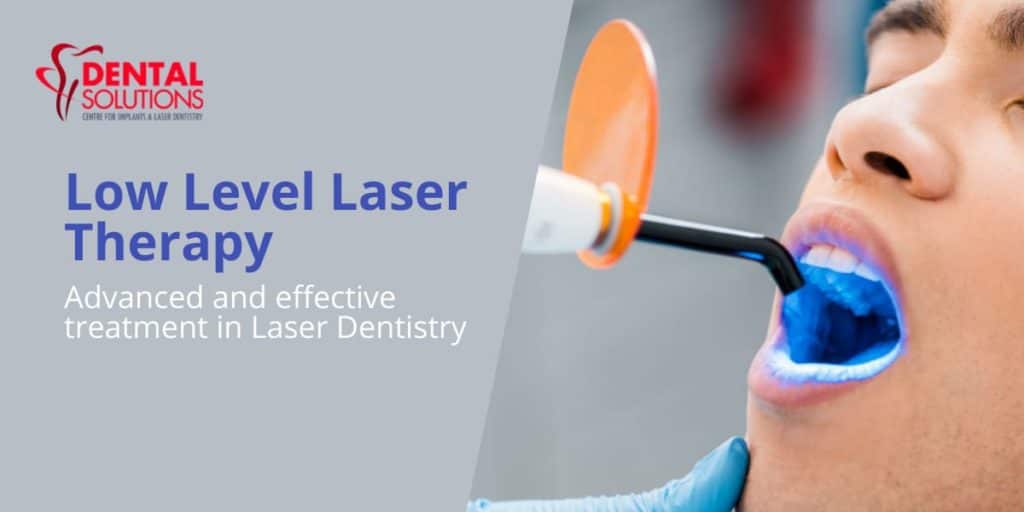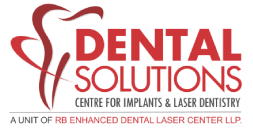- +917892951808
- Indiranagar, Bangalore
Best Dental Clinic In Bangalore Indiranagar | Best Dentist in Bangalore Indiranagar
- Home
- About Us
- Treatments
- Blog
- Contact Us
Low-level laser therapy (LLLT) in Dental treatments

Low-Level Laser Therapy (LLLT) is a light source treatment that generates light of a single wavelength. Low-level laser therapy (LLLT) has been used in the medical world for decades. Lasers can be classified as high-powered, low powered, surgical or therapeutic. There is evidence and research that shows that low-powered or therapeutic lasers have anti-inflammatory and bio-stimulatory properties when used on live tissue. Laser technology has the advantage of improving treatment techniques as well as aiding in the healing process.
LLLT is known to offer therapeutic benefits to patients, such as accelerated wound healing and pain relief, however, there is much to be learned about the mechanisms, recognition of the therapeutic area, and how to use the technique in certain medical procedures to reach the treatment goals.
Low-Level Laser Therapy (LLT) and Dentistry
As stated, laser therapy has a long history of medical applications and has started showing a promising future in the dental world. Although laser technology has been used for decades, it is considered a newly developing technique in dentistry and is used by many clinicians in dentistry and we are proud to be one among the many. The healing process, less time consumption and pain relief are some of the reasons for its popularity and use. There is evidence that laser therapy is useful when compared to conventional routine dental care and is rising in popularity among dentists, especially in developing countries.
LLLT is beneficial in controlling orthodontic post-adjustment pain; Low-level lasers do not cut or ablate the tissue. It reduces the secretion of highly pro-inflammatory molecules prostaglandin E2 and interleukin-1 from fibroblast cells that reduces pain after orthodontic tooth movement.
Advantages or Benefits low-level laser therapy in dentistry
Below are some of the benefits low-level laser therapy in dentistry offers:
- When LLLT procedures are performed on soft tissues, the process uses laser energy to anastomose tissues and hence suturing ((stitch up the incision), with a suture) through a process called tissue welding is not required.
- Faster healing of injured soft and hard tissues.
- Minimizes bleeding or blood loss.
- At times, minimizes or eliminates the need for anaesthesia (However, this depends on the clinical procedure).
- Bacterial decontamination of root canal systems and deep periodontal pockets.
- Helps in Periodontal ligament (PDL) regeneration
- Lesser pain
- Repair of hard tissues is simpler and more comfortable for the patients
How does Low-Level Laser Therapy (LLLT) help in pain relief?
In traditional dental procedures, pain occurs due to tissue trauma and the release of inflammatory mediators. This happens once the effect of local anaesthesia is reduced or disappeared. There is evidence that LLLT has an antibacterial effect and acts as an inflammatory agent, also allowing bone growth and simulating collagen. Using LLLT helps relieve pain and repair the wounds easily. The mechanism of this pain reliever is not yet clear however, studies and research show that laser decreases swelling, redness, heat, pain and inflammation by the following mechanisms:
- Change in prostaglandins synthesis (PGE and PGF2α)
- Increased synthesis of PCL2
- Restriction of bradykinins synthesis
- Increase of phagocytosis
- Vasodilatation and stronger circulation
- Increased lymphatic drainage
- Increased secretion of MIF (Migration Inhibitory Factor)
- Cutting back on histamine release
Applications of Low-Level Laser Therapy (LLLT) in Dentistry
The applications of LLLT in the dental world are wide, we would want to highlight a few of the many applications of LLLT in dentistry:
- Aphthous ulcers: Aphthous ulcers are the most common lesions found in the oral cavity. Research shows that low-level laser therapy (LLLT) has the potential to treat aphthous ulcers along with reducing pain and discomfort. The therapy also has fewer functional complications. Furthermore, LLLT offers faster healing compared with the usual medication therapy.
There are 4 types of low-level lasers that are normally used to treat aphthous ulcers: CO2, Nd:YAG, diode and GaAlAs lasers. Each one is named according to the active medium present. For example, Nd:YAG laser uses neodymium-doped (Nd) yttrium aluminium garnet (YAG) crystals and CO2 laser uses carbon dioxide.
- Oral lichen planus: Treatment of oral lichen planus by LLLT offers a reduction in pain and a significant decrease in the size of the lesions, without any side effects.
- Xerostomia: Xerostomia means mouth or oral dryness or dry mouth syndrome, majorly caused by a reduction in salivary secretion. The reasons for a reduction in salivary secretion could be many – medication, smoking, etc. In cases of xerostomia, the use of infrared laser shows a significant increase in salivary flow. When LLLT is applied to both parotid and submandibular glands, the result shows efficiency in reduction of xerostomia and increased flow of saliva. Furthermore, low-level laser therapy can improve salivary flow and regeneration of epithelial cells of the salivary duct.
- Periodontitis: It is one of the most common and severe gum diseases. If not treated at the earliest it can cause loss of teeth in the stages further. Patients today with periodontal disease are treated with LLLT. At times, both LLLT and conventional periodontal treatment methods are used. The LLLT in periodontics improves the healing process and it shows significant improvement in collagenization and homogenization in the gingival area.
Is Laser dentistry Safe?
Laser dentistry is very safe for both kids and adults, we would also say it is the most effective method of treating several dental ailments. Laser dental technology has been approved by the Food and Drug Association (FDA) and it has also received the seal of acceptance from the American Dentist Association (ADA).
Dental Clinics in Bangalore using Low-Level Laser Therapy (LLLT)
LLLT is currently being followed in all the specialities including orthodontics. At Dental Solutions, we have seen great results with the use of LLLT, wherein it has resulted in a better and patient satisfaction practice. Additionally, decreased treatment timings along with less or no pain procedures. For more information, reach us on WhatsApp
